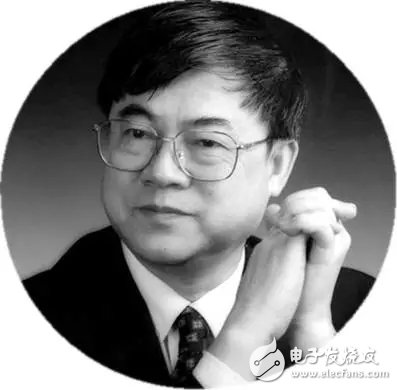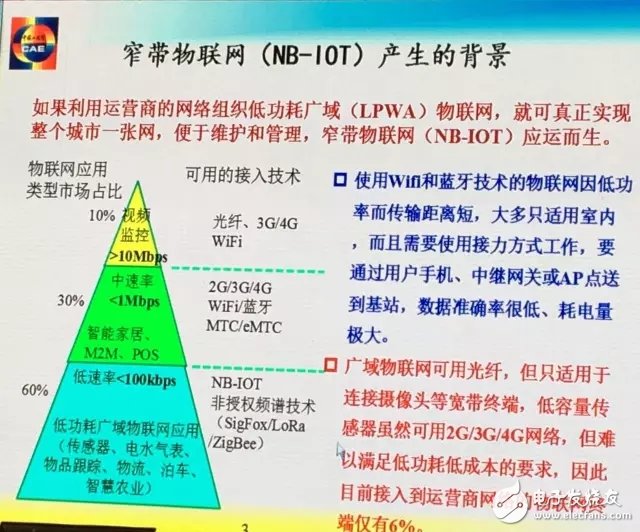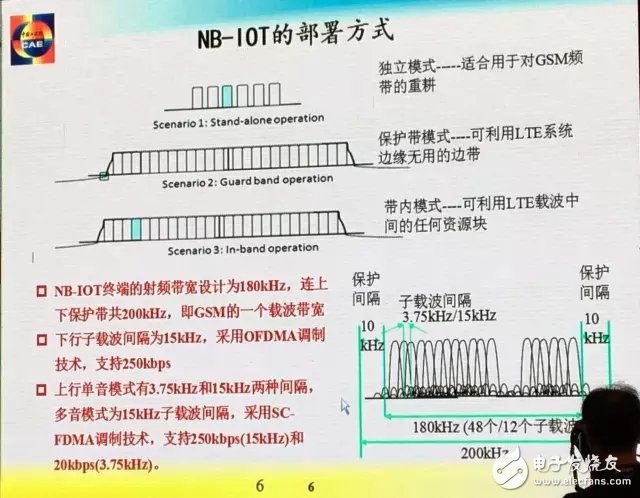At the 2016 China (Shanghai) Internet of Things Conference, iot101 Jun had the honor to interview the Academician of the China Internet Society, Dr. He Hezhen, after an speech. We talked about new opportunities, new technologies and some future possibilities for the development of the Internet of Things. The problem is now organized as follows: summary One. New opportunities for new technologies and applications in the development of the Internet of Things 1. The emergence of narrowband Internet of Things has changed the application of the Internet of Things. 2. Internet of vehicles and networked vehicles 3. Internet of Things supports Industry 4.0/Industry Internet and "Internet +" two. Four good news shows that the development of the Internet of Things is on the right track The first good news is standardization. The second good news is 5G The third good news is the industry internet. The fourth good news is the entry of big companies. three. Last suggestion the first New opportunities for new technologies and applications in the development of the Internet of Things 1. The emergence of narrowband Internet of Things has changed the application of the Internet of Things. You can see the triangle diagram, the top is the video surveillance IoT application, which needs about 10Mbps; the smart home, machine to machine (M2M) and other applications require about 1Mbps; and the remaining 60% Networked applications rely on low-speed (100Kbps) low-power WANs. Generally speaking, video surveillance should use optical fiber; medium speed may use 2G and 3G; Internet of Things using WIFI and Bluetooth because of low power and short transmission distance, most of which are only suitable for indoor use, and the power consumption is also compared through mobile phones and gateways. Big. About 60% of applications are wide-area Internet of Things. Low-capacity sensors are too wasteful if they use mobile communication networks, because mobile communication networks are not intended for these purposes, so it is difficult to meet the low-power requirements. Therefore, only 6% of Internet of Things terminals currently accessing the carrier network. We believe that if we use the operator's network, we can realize a network in the whole city. The narrow-band Internet of Things is like this. In May 2014, it was established; in 2015, Huawei and Qualcomm proposed the IoT solution for narrowband cellular; by September 2015, ZTE and Ericsson proposed narrowband convergence; the technical plan was discussed in December this year, and then on June 16 this year in South Korea. Busan passed the core standard of narrowband IoT. NB-IoT is a low-power technology based on licensed bands. In addition to this, there are technologies for unlicensed bands: one called Sigfox and one called LoRa. The reason why NB-IoT did not choose the unlicensed band was because he had more interference. The advantage of using the licensed band is that it can be deployed directly on the carrier's existing 2G/3G/4G network and is compatible with existing networks. NB-IoT currently defines the uplink and downlink frequency division (FDD) mode, but to reduce interference, the half-duplex mode is applied. It has three modes of operation, one is independent redo outside the operator's network; the second is on the LTE protection band, in fact, its main principle is that the uplink uses OFDMA, and the 10 kHz protection band is reserved. It has two subcarrier spacings, one is 3.75 kHz and the other is 15 kHz apart; the third is in-band mode: any resource block in the middle of the LTE carrier can be utilized. It has several major features: One is wide coverage: NB-IoT technology can achieve coverage gain of more than 20dB than GSM, and the coverage area is expanded by 100 times. It can also be covered in underground garages and underground pipelines. Uplink tool spectral density gain 17dB (200mw/3.75kHz for NB-IoT compared to 200mw/180kHz for 2G/3G/LTE) 2-16 times the retransmission mechanism gain 3-12dB (pay the delay cost, 10s, but the business allows) Compilation code gain 3-4dB The second is the big connection: NB-IoT supports 50,000 connections in a single sector, which is 50 times higher than the current ones (2/3G/4G are 14/128/1200 respectively). Currently there are about 5 million physical sites around the world, assuming all With the deployment of NB-IoT, the number of IoT terminals accessible to three sectors per site will reach 450 billion. Narrowband technology: Uplink equivalent power 36 channels * 23dBm, boost channel capacity Reduce air interface signaling overhead and improve spectrum efficiency Base station optimization: independent admission congestion control and terminal context information storage Core network optimization: terminal context storage and downstream data cache The third is low power consumption: NB-IoT terminal sends 200Byte messages once a day, AA battery standby time is 10 years. A single quick pass time has been shortened The terminal works in the energy-saving mode (PSM) 99% of the time. This energy-saving mode is different from the energy-saving mode of the mobile phone. The terminal is still registered in the network, but the signaling is unreachable. The terminal is in deep sleep, and the power consumption of the terminal is only 15 microwatts in 99% of the time. It takes a long time to sleep, which can reduce the frequency of the terminal listening to the network. Because the Internet of Things does not change as fast as a mobile phone, mobility management can be simplified. The fourth is low cost: the cost of a single module is currently no more than $5, and the goal is to do about $1. 180kHz narrowband, reducing chip complexity; Simplify the protocol stack (500 Bytes) and reduce on-chip Flash/RAM; Low sampling rate Single antenna, half duplex, low RF cost; The peak-to-average ratio is low, and the single-chip SOC has a built-in 23dBm transmit power. I just said that last week 3GPP had frozen the NB-IoT core protocol standard at the Busan conference in South Korea. On May 30 this year, ZTE and China Mobile took the lead in fully complying with the technical verification demonstration of the NB-IoT standard protocol in the laboratory. Huawei launched the LiteOS operating system for the Internet of Things. The Ministry of Industry and Information Technology held a work promotion meeting for narrow-band IoT in April this year, requiring the construction of a large-scale field test based on the standard NB-IoT at the end of the year. China Unicom will launch experiments based on narrow-band IoT in more than five cities this year, including Shanghai and Disneyland in Shanghai. It will be fully promoted in 2018. It is expected that 50 mainstream operators worldwide will support NB-IoT by the end of this year. Market research firms predict that narrowband IoT will cover a quarter of the IoT connection in the future. By 2020, M2M devices can reach 7 billion connections. What area can the narrowband Internet of Things be applied to? Smart city, in the fields of remote meter reading, intelligent parking, intelligent street lighting, environmental monitoring, smart agriculture, livestock farming irrigation, smart garbage cans, etc. With asset tracking, intelligent tracking, over-range alarm, electronic control and other functions. HP has embedded wireless sensors in its printers since 2013. It is mainly used to monitor ink usage and automatically trigger recording, reducing customer complaints and saving 50%. Different from traditional FR-4 (plastic), ceramic materials have good high-frequency performance and electrical properties, and have properties that organic substrates do not have, such as high thermal conductivity, excellent chemical stability and thermal stability. Ideal packaging material for large scale integrated circuits and power electronic modules. Ceramic PCB Manufacturer,Ceramic PCB Board,Ceramic Circuit Board,Ceramic Printed Circuit Board,How to Manufacture PCB Huizhou Liandajin Electronic Co., Ltd , https://www.ldjcircuitboard.com


